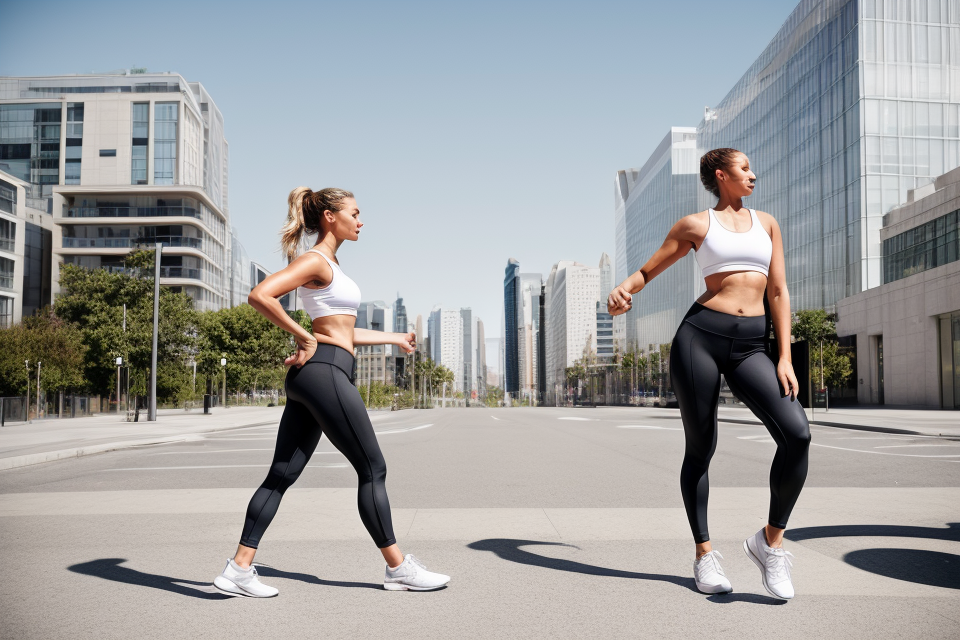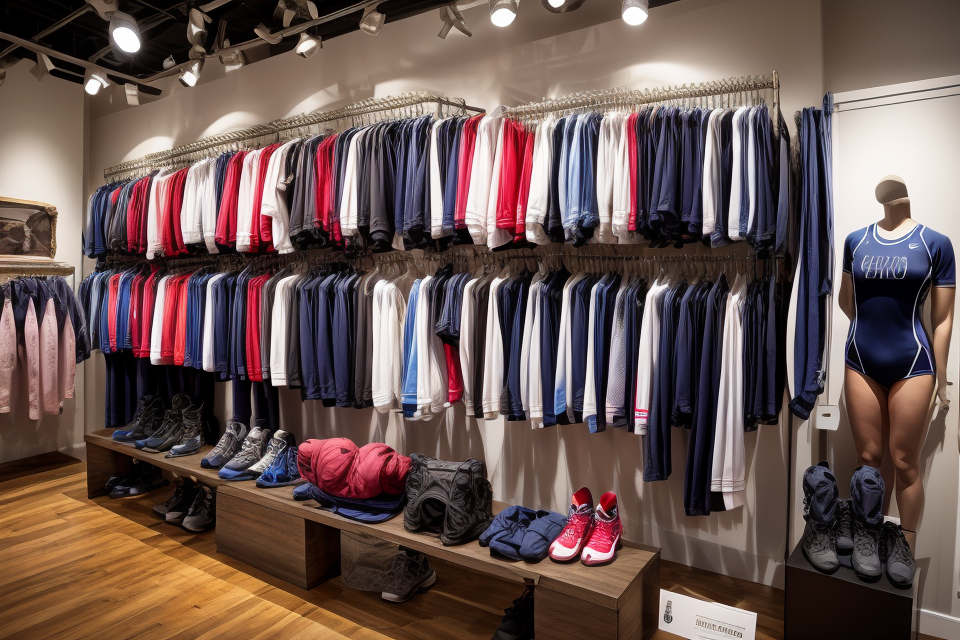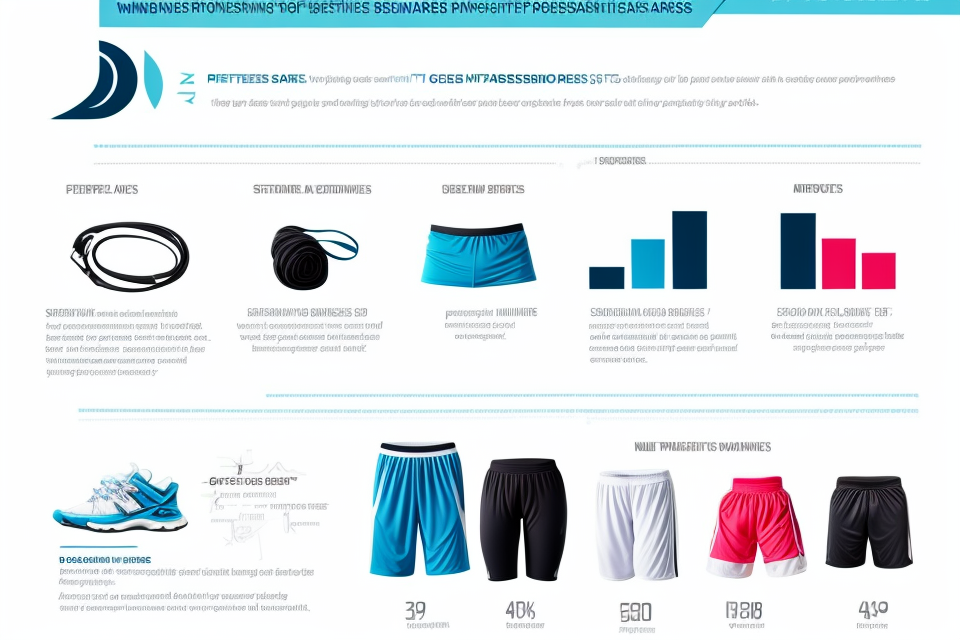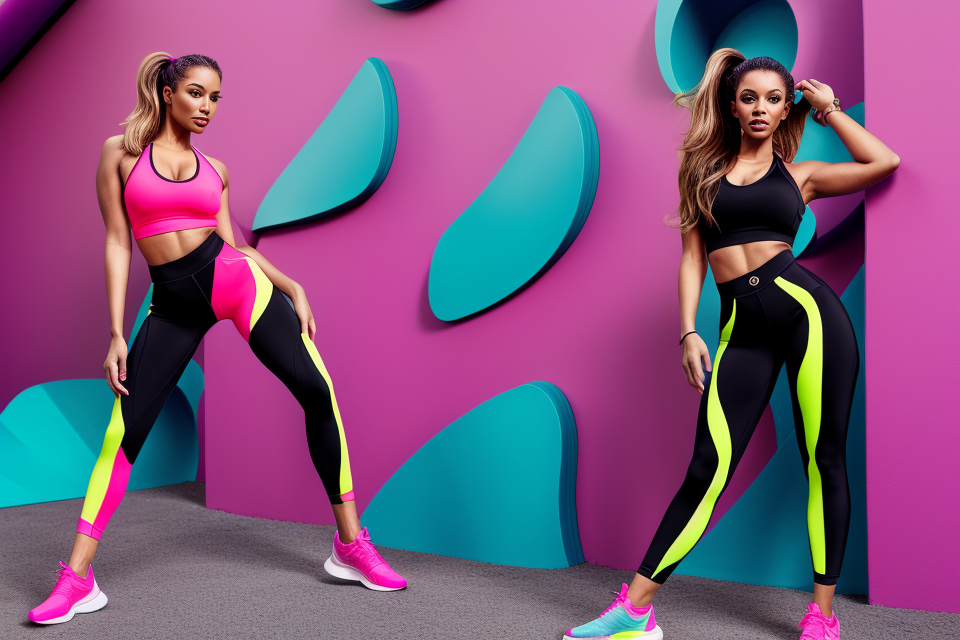Activewear is an essential part of our wardrobe, especially for those who lead an active lifestyle. It’s not just about looking good, but it’s also about feeling comfortable and confident while working out or engaging in any physical activity. But what makes good activewear? In this comprehensive guide, we will explore the key factors that contribute to making great activewear. From material and design to fit and functionality, we will delve into the details that set high-quality activewear apart from the rest. Whether you’re a seasoned athlete or just starting your fitness journey, this guide will help you make informed decisions when choosing your activewear. So, let’s get started and discover what makes good activewear!
Factors Affecting Activewear Quality
Material
When it comes to activewear, the material used plays a crucial role in determining its quality. The following are some of the key factors to consider when evaluating the material used in activewear:
Breathability
Breathability refers to the ability of the material to allow air to circulate through it, which helps to keep the wearer cool and dry. This is especially important for activewear, as it is designed to be worn during activities that can cause the body to produce sweat. Some materials, such as cotton, are naturally breathable, while others, such as synthetic fabrics, may require special treatments to improve their breathability.
Durability
Durability refers to the ability of the material to withstand wear and tear over time. Activewear is designed to be worn during activities that can be rough on clothing, so it is important that the material used is able to withstand the demands of the activity. Some materials, such as nylon and polyester, are known for their durability, while others, such as silk, may be more prone to wear and tear.
Moisture-wicking
Moisture-wicking refers to the ability of the material to draw moisture away from the body and keep it dry. This is an important feature for activewear, as it helps to keep the wearer cool and comfortable during activities that can cause the body to produce sweat. Some materials, such as polyester and nylon, are known for their moisture-wicking properties, while others, such as cotton, may not wick moisture away as effectively.
Stretch
Stretch refers to the ability of the material to stretch without breaking. This is an important feature for activewear, as it allows the wearer to move freely and comfortably during activities. Some materials, such as spandex and elastane, are known for their stretch properties, while others, such as wool and denim, may not stretch as easily.
UV protection
UV protection refers to the ability of the material to protect the wearer from the harmful effects of the sun’s ultraviolet rays. This is an important feature for activewear, as it helps to prevent sunburn and other skin damage. Some materials, such as cotton and linen, are naturally UV-resistant, while others, such as synthetic fabrics, may require special treatments to improve their UV protection.
Design
Fit
- The fit of activewear is crucial to its overall quality. A well-fitting garment will not only be more comfortable but also more effective in providing support and reducing movement during activities.
- To achieve the best fit, activewear should be designed with a variety of sizes and body types in mind. This means that the garment should be available in different sizes, and the design should be such that it can be adjusted to fit a range of body types.
- The fit of activewear should also take into account the specific activity for which it is intended. For example, a running shirt should be designed to fit snugly around the bust and midsection to reduce bounce, while still allowing for a full range of motion.
Functionality
- The functionality of activewear is another important factor in its overall quality. Activewear should be designed to meet the specific needs of the activity for which it is intended.
- For example, a yoga top should be designed to allow for a full range of motion, while still providing support and coverage. This may involve a particular cut or fabric type that allows for flexibility, while still providing support and coverage.
- Additionally, activewear should be designed with practicality in mind. This means that it should be easy to care for, durable, and made from high-quality materials that can withstand regular wear and tear.
Comfort
- Comfort is another key factor in the overall quality of activewear. A garment that is comfortable to wear will encourage the wearer to engage in physical activity, while one that is uncomfortable may discourage them from doing so.
- There are several factors that contribute to the comfort of activewear, including the fabric type, cut, and fit. The fabric should be soft and breathable, while the cut should allow for freedom of movement and prevent chafing.
- Additionally, the fit of the garment should be such that it does not rub or chafe against the skin, and it should allow for a full range of motion.
Overall, the design of activewear is a crucial factor in its overall quality. A well-designed garment will fit well, be functional for its intended activity, and be comfortable to wear. By considering these factors, activewear manufacturers can create garments that not only look good but also perform well and feel comfortable to wear.
Construction
Stitching
The quality of stitching is a crucial factor in determining the durability and effectiveness of activewear. Poorly stitched garments can become loose or fall apart during wear, which can be dangerous for activities such as running or cycling. In contrast, well-stitched garments can provide a secure and comfortable fit that moves with the body.
To ensure good stitching, activewear manufacturers use high-quality thread and needles that are designed to withstand the demands of movement. Additionally, they may use reinforced stitching in areas that are prone to wear and tear, such as the underarms and the bottom of the legs.
Quality control
Activewear manufacturers also implement rigorous quality control measures to ensure that their products meet high standards. This may include inspections at various stages of production, as well as testing for strength, flexibility, and breathability. By taking these steps, manufacturers can ensure that their activewear is not only comfortable but also durable and effective for the intended activity.
Sustainability
In addition to the construction of the garment itself, the sustainability of the materials used and the production process can also affect the quality of activewear. Many manufacturers are now using eco-friendly materials and production methods to reduce their environmental impact. For example, some companies use recycled materials or biodegradable packaging, while others use renewable energy sources to power their production facilities.
Furthermore, some manufacturers are taking steps to reduce waste and energy consumption throughout the production process. This may include using automated cutting machines that minimize material waste or implementing water-saving technologies in dyeing and finishing processes. By prioritizing sustainability, activewear manufacturers can create high-quality products that are not only effective but also environmentally responsible.
Key Considerations for Different Activities
Running
When it comes to running, there are several key considerations that should be taken into account when choosing activewear. These include:
Lightweight
When running, it’s important to wear clothing that is lightweight and won’t weigh you down. This will allow you to move freely and easily, without feeling bogged down by your clothes. Look for fabrics that are lightweight and breathable, such as moisture-wicking materials that will keep you cool and dry.
Non-restrictive
Running clothes should be non-restrictive and allow for a full range of motion. Look for clothes that are cut loosely and don’t constrict your movements. Avoid clothes with tight sleeves or waistbands that could rub or chafe as you run.
Quick-drying
It’s important to choose running clothes that are quick-drying, as you may encounter unexpected rain or sweat during your run. Look for fabrics that are designed to wick moisture away from your skin and dry quickly, so you can stay comfortable and dry throughout your run.
Reflective elements
If you plan to run outside in low light conditions, it’s important to choose running clothes with reflective elements. These can help make you more visible to drivers and other pedestrians, and can help keep you safe while running in the dark.
Flexibility
When running, it’s important to choose clothes that allow for maximum flexibility and movement. Look for clothes that are cut loosely and made from stretchy, breathable fabrics that won’t restrict your movements. Choose clothes that are designed specifically for running, with features such as ergonomic cuts and seams that won’t chafe or rub as you run.
Yoga
Flexible
In order to perform yoga movements with ease and proper alignment, it is crucial to choose activewear that offers ample flexibility. Fabrics like bamboo, cotton, and polyester are great options as they are soft, stretchy, and allow for a full range of motion. Avoid rigid or restrictive materials like denim or canvas, which can hinder your movements and cause discomfort.
Yoga is often performed in a warm environment, and it is essential to have activewear that can efficiently wick moisture away from the body. Moisture-wicking fabrics like polyester and nylon draw sweat away from the skin, keeping you dry and comfortable during your practice. This is especially important during longer yoga sessions or in hot weather conditions.
Breathable
Breathability is another crucial aspect of good activewear for yoga. Yoga is a physically demanding practice that can cause you to sweat, and breathable fabrics help to regulate body temperature by allowing air to circulate. Materials like cotton, bamboo, and tencel are known for their excellent breathability, keeping you cool and comfortable throughout your practice.
During yoga, you need to move freely and comfortably without any restrictions. Look for activewear that has a relaxed fit, allowing you to move your arms, legs, and torso without feeling constricted. Avoid clothing with tight-fitting cuffs or waistbands, as they can hinder your movements and cause discomfort.
UV protection is also an important consideration for yoga activewear, especially if you practice outdoors or in a bright studio. Opt for clothing with a high UPF (ultraviolet protection factor) rating to protect your skin from harmful UV rays. This can help prevent sunburn, premature aging, and skin damage.
Gym/Weightlifting
When it comes to choosing activewear for gym and weightlifting activities, there are several key factors to consider. These include:
One of the most important considerations for activewear is moisture-wicking capabilities. When you’re working out, you’ll be producing a lot of sweat, and your clothes need to be able to keep up with the demand. Moisture-wicking fabrics are designed to draw sweat away from your body and evaporate it quickly, keeping you dry and comfortable throughout your workout.
Another important factor to consider is quick-drying capabilities. You don’t want to be stuck with wet clothes during your workout, as this can be uncomfortable and distracting. Quick-drying fabrics are designed to dry fast, so you can focus on your workout without worrying about your clothes.
Durable
Activewear needs to be durable enough to withstand regular wear and tear. When you’re lifting weights or working out, you’re putting your clothes through a lot of stress and strain. Look for activewear made from high-quality materials that can withstand the demands of your workout.
Flexibility is also an important consideration for activewear. When you’re lifting weights or doing other exercises, you need to be able to move freely and comfortably. Look for activewear that is made from stretchy, breathable fabrics that allow for full range of motion.
Supportive
Finally, activewear should be supportive and comfortable. This is especially important when it comes to bras and other undergarments. Look for activewear that provides adequate support and doesn’t chafe or irritate your skin.
Overall, when it comes to choosing activewear for gym and weightlifting activities, it’s important to consider factors such as moisture-wicking, quick-drying, durability, flexibility, and support. By taking these factors into account, you can choose activewear that will help you perform at your best and feel comfortable throughout your workout.
Choosing the Right Activewear for Your Needs
Assessing your needs
Body type
When assessing your needs for activewear, it is important to consider your body type. Different body types require different fits and styles of clothing. For example, those with a more athletic build may require looser-fitting clothing to allow for a full range of motion, while those with a slimmer build may prefer clothing that fits more closely to their body.
Activity level
The level of activity you engage in is another important factor to consider when choosing activewear. If you are an avid runner, you will need different activewear than someone who simply goes for a casual walk. For high-intensity activities, look for activewear made with moisture-wicking fabrics that will keep you cool and dry. For lower-intensity activities, look for comfortable and breathable clothing that will not hinder your movement.
Climate
The climate you will be exercising in is also an important consideration when choosing activewear. If you live in a hot and humid climate, look for activewear made with moisture-wicking fabrics that will keep you cool and dry. If you live in a colder climate, look for activewear made with insulating fabrics that will keep you warm.
Budget
Finally, your budget is an important factor to consider when choosing activewear. Activewear can range in price from very affordable to quite expensive. Set a budget for yourself and look for options that fit within that budget. Keep in mind that while expensive activewear may be made with higher quality materials, it is not always necessary for everyone. There are many options for affordable activewear that still provide the support and comfort you need to get the most out of your workout.
Researching brands and products
Online reviews
One of the most reliable sources of information when it comes to researching activewear brands and products is online reviews. Websites such as Amazon, Yelp, and Trustpilot offer a wealth of information from real customers who have purchased and used the products. These reviews can provide insight into the fit, quality, durability, and overall performance of the activewear. It’s important to read both positive and negative reviews to get a well-rounded understanding of the product and brand.
Expert opinions
Expert opinions can also be a valuable source of information when researching activewear brands and products. Fitness and fashion experts, as well as professional athletes, often share their recommendations for the best activewear brands and products. These experts have extensive knowledge and experience in the field and can provide valuable insights into the quality, performance, and style of the activewear.
Brand reputation
The reputation of the brand is also an important factor to consider when researching activewear. Brands that have a strong reputation for quality, performance, and customer satisfaction are more likely to produce high-quality activewear. It’s important to research the brand’s history, customer service, and product quality to ensure that they align with your values and needs.
Material and design features
Finally, the material and design features of the activewear are crucial factors to consider. Different materials and designs are suitable for different activities and body types. For example, moisture-wicking materials are ideal for workouts that cause excessive sweating, while breathable materials are ideal for hot weather or high-intensity activities. Additionally, the design features such as the fit, seams, and stretchiness can also impact the comfort and performance of the activewear. It’s important to choose activewear that fits well, is comfortable to wear, and has the features that are suitable for your needs.
Caring for Your Activewear
Maintaining your activewear is crucial to ensure it lasts longer and performs optimally. Proper care and maintenance can help prevent damage, prolong the lifespan of your activewear, and keep it looking and feeling fresh. Here are some essential tips for caring for your activewear:
Proper washing and drying
The first step in caring for your activewear is washing it properly. Follow the care label instructions carefully, as different fabrics require different washing methods. In general, avoid using chlorine bleach on activewear made from nylon or polyester, as it can weaken the fibers. Instead, use a color-safe laundry detergent or a gentle soap. Avoid using fabric softener, as it can reduce the wicking ability of the fabric.
Once you’ve washed your activewear, it’s essential to dry it correctly. Avoid using high heat settings, as they can cause damage to the fabric. Instead, use a low or medium heat setting or air-dry your activewear. If you must use a dryer, make sure to remove it from the dryer as soon as it’s done to prevent wrinkling.
Storage
Proper storage is crucial to ensure your activewear stays in good condition. Hang your activewear in a cool, dry place, away from direct sunlight. Avoid folding your activewear, as it can cause creases and wrinkles. Instead, roll or ball it up to keep it wrinkle-free.
Repair and replacements
Activewear can get damaged over time, and it’s essential to repair or replace it when necessary. Small tears or holes can be repaired using a seam ripper or a needle and thread. For more significant repairs, it’s best to take your activewear to a professional.
If your activewear is beyond repair, it’s time to replace it. Look for similar activewear with the same features and functionality, and consider upgrading to a better quality fabric.
Regular inspection
Regular inspection of your activewear is crucial to identify any damage or wear and tear early on. Check for loose seams, frayed edges, or any other signs of damage. If you notice any issues, address them immediately to prevent further damage.
Adapting to wear and tear
As your activewear gets older, it will inevitably wear out. Adapting to this wear and tear is crucial to ensure you continue to get the most out of your activewear. Consider upgrading to a higher quality fabric or investing in new activewear with improved features and functionality.
FAQs
1. What are the key features of good activewear?
Good activewear should be comfortable, durable, and functional. It should also fit well and be made from high-quality materials that wick moisture away from the body. Additionally, good activewear should be designed with the specific activity in mind, providing the necessary support and flexibility for the movement.
2. What are the benefits of wearing good activewear?
Wearing good activewear can improve performance, reduce the risk of injury, and increase comfort during physical activity. Good activewear can also help regulate body temperature, and it can even make you look and feel better.
3. How do I know if activewear fits well?
Activewear should fit well in all the right places, providing support and stability without being too tight or too loose. The material should also be breathable, allowing air to flow through the fabric and keep you cool.
4. What are the different types of activewear?
There are many different types of activewear, including athletic wear, workout clothes, gym clothes, running clothes, yoga clothes, and more. Each type of activewear is designed for a specific activity and may have different features and benefits.
5. How do I choose the right activewear for my activity?
When choosing activewear, it’s important to consider the specific activity you’ll be doing. For example, if you’re going for a run, you’ll want to choose running clothes that are lightweight and breathable. If you’re doing yoga, you’ll want to choose clothes that are comfortable and allow for a full range of motion.
6. How do I care for my activewear?
To keep your activewear in good condition, it’s important to care for it properly. This may include washing it regularly, using the appropriate detergent, and avoiding exposure to heat or sunlight. It’s also a good idea to check the care instructions on the label before washing or drying your activewear.
7. How often should I replace my activewear?
The lifespan of activewear depends on how often it’s worn and how well it’s cared for. In general, activewear should be replaced every 6 months to a year, depending on the frequency of use and the type of activewear.



